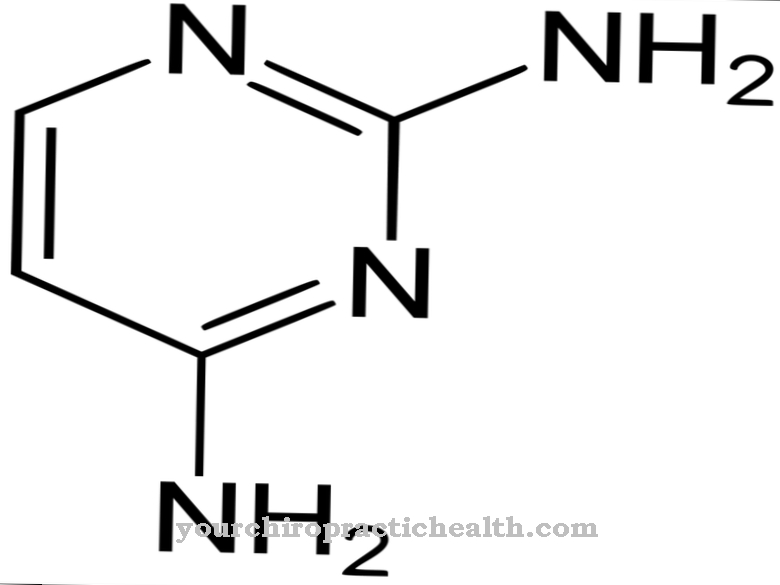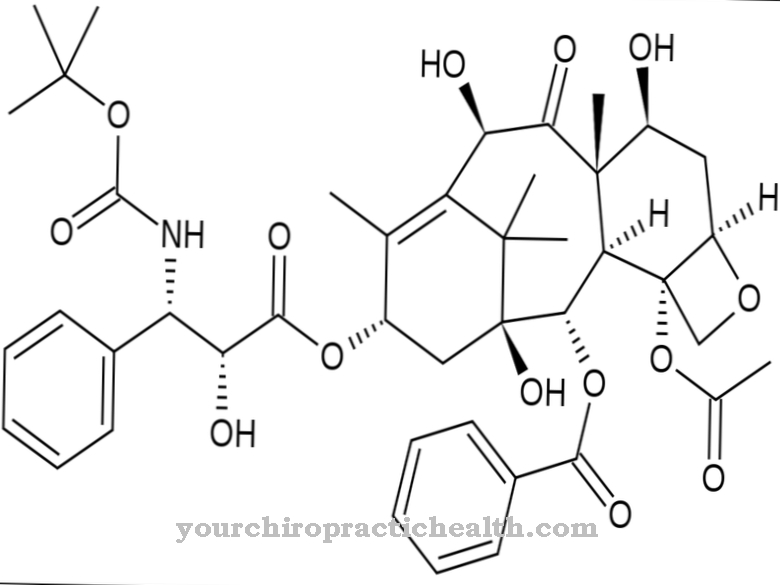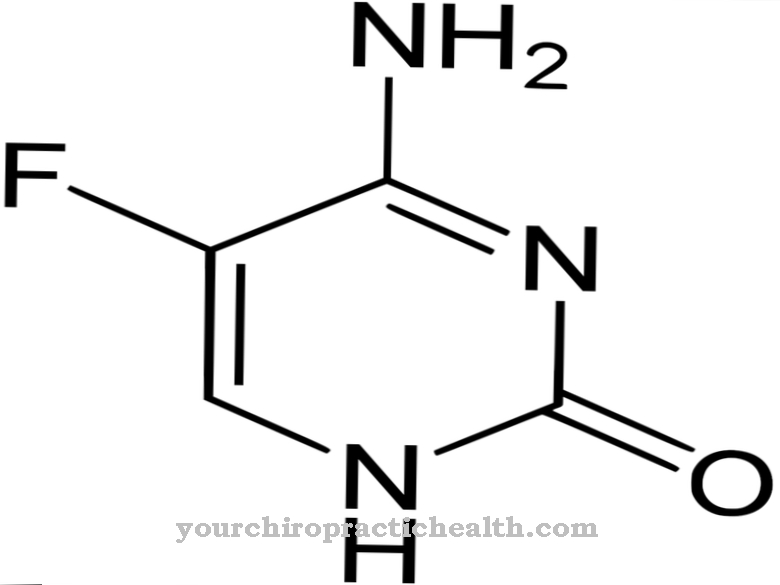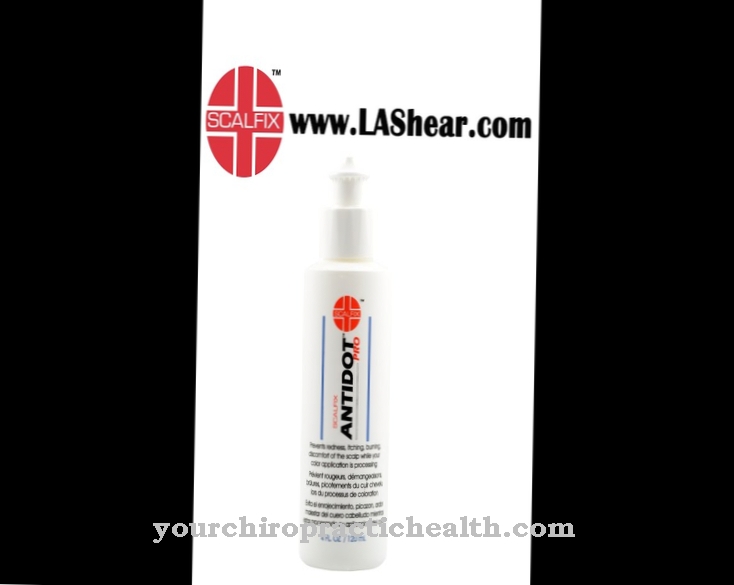5-aminolevulinic acid, also known as 5-ALA, is an amino acid belonging to the group of ketocarboxylic acids. In humans, it occurs as an intermediate in heme synthesis. As a drug, 5-aminolevulinic acid is used in the local treatment of actinic keratoses, which are precursors to skin cancer.
What is 5-aminolevulinic acid?

5-aminolevulinic acid is an amino acid from the group of ketocarboxylic acids present in the human body. 5-aminolevulinic acid is used for the single treatment of mild actinic keratoses of the face and scalp. The hairless areas are treated. In addition, 5-aminolevulinic acid can be used as a supporting agent in the surgical resection of the malignant brain tumor glioblastoma.
5-aminolevulinic acid is obtained chemically and biotechnologically with the help of bacteria such as methanobacteria, rhodobacteria, propionibacteria and the like.
Since January 19, 2011, 5-aminolevulinic acid may only be used as an approved finished medicinal product instead of an individual formulation. Deviations from this provision may only be made in the event of an existing clinical or scientifically verifiable additional benefit of an individual formulation.
Pharmacological effect
5-aminolevulinic acid (5-ALA) has a phototoxic effect and is more concentrated in tumor cells and tumor-like cells than in healthy cells. It is converted into protoporphyrin IX in tumor cells and tumor-like cells.
Since Protoporphyrin IX is a red fluorescent molecule, it can be used well in tumor diagnostics and photodynamic therapy (PDT). This protoporphyrin IX accumulation, which is increased in tumor cells, is used in photodynamic therapy to define and selectively kill malignant cells.
This is possible because the protoporphyrin IX absorbs the light energy after exposure to specially suitable light sources and then transfers it to oxygen, which becomes very reactive and toxic singlet oxygen. In this way, the malignant tumor tissue in which the protoporphyrin IX was mainly formed is deliberately destroyed. Surrounding healthy cells, however, are largely spared with this procedure.
With the detection of 5-aminolevulinic acid in the 24-hour urine, chronic lead exposure or lead poisoning can also be determined. In addition, an increased concentration of 5-aminolevulinic acid is found in porphyria in the urine.
Medical application & use
With 5-aminolevulinic acid, skin tumors and actinic keratoses, precursors of skin cancer, can be effectively combated using photodynamic therapy. Since 5-aminolevulinic acid accumulates more intensively in tumor cells than in healthy skin cells, it acts specifically on the diseased areas.
5-aminolevulinic acid, also known as 5-ALA, is converted to porphyrin in tumor cells. When exposed to light, porphyrin absorbs energy from the light and transfers it to the oxygen in the tumor cell or actinic keratosis. During this process, singlet oxygen is formed, which causes the cell death of the malignant skin cells. 5-aminolevulinic acid is used for one-time treatment because it is very effective.
Another area of application for 5-aminolevulinic acid is brain surgery. This active ingredient significantly facilitates the removal of malignant glioblastomas in the brain - malignant tumors of the astrocytoma type. The patient drinks a solution made with 5-aminolevulinic acid 3 hours before the operation. Due to an enzyme defect in the tumor cell, the photosensitive substance primarily gets there. During the operation, the neurosurgeon switches on a blue light, whereupon the 5-aminolevulinic acid-containing tumor cell fluoresces red-violet.
Diseased brain tissue to be removed can be clearly distinguished from the surrounding intact brain tissue. The tumor can be clearly identified and removed. With this method, only half as many follow-up operations to remove residual tumor tissue are necessary as with operations performed without 5-aminolevulinic acid.
Risks & side effects
When using 5-aminolevulinic acid, there is a risk of increased sensitivity to light - a so-called phototoxicity.For this reason, eyes and skin should not be exposed to strong light sources for 24 hours after ingestion of 5-aminolevulinic acid.
Such light sources are direct sunlight, very bright interior lighting, but also operating room lighting. The parallel administration of other potentially phototoxic substances should also be avoided. These include sulfonamides, tetracyclines, fluoroquinolones or St. John's wort extracts.
It should be taken into account that 5-aminolevulinic acid is a strain on the liver, which is why drugs that may have hepatotoxic effects should be avoided within 24 hours of taking 5-aminolevulinic acid.
Patients with cardiovascular disease should be treated with 5-aminolevulinic acid with special caution because of the risk of a drop in blood pressure and decreased pulmonary vascular resistance.
Blood counts are advisable because blood count changes such as anemia, thrombocytopenia and leukocytosis are more common.






.jpg)






.jpg)

.jpg)
.jpg)











.jpg)